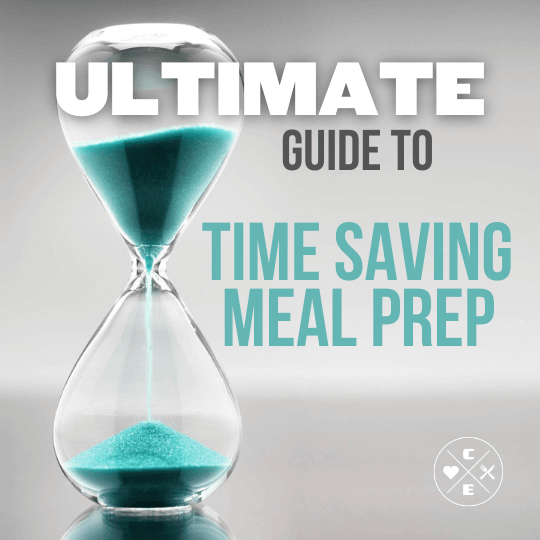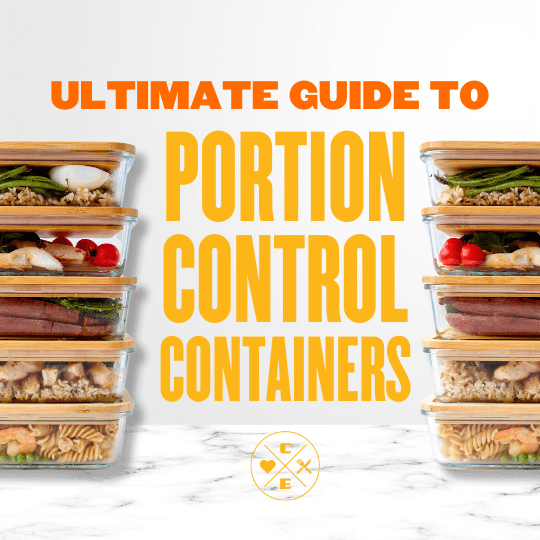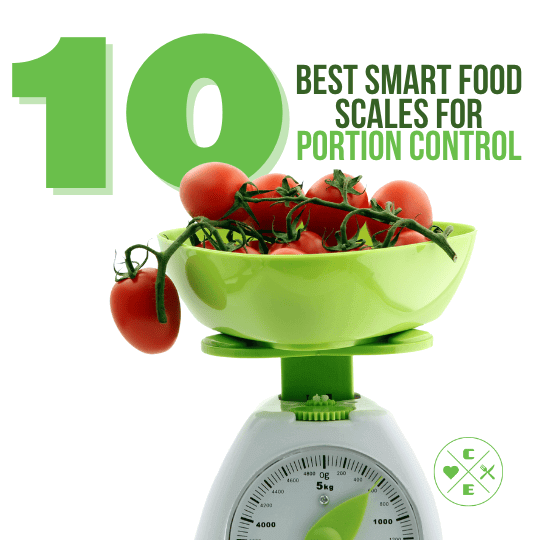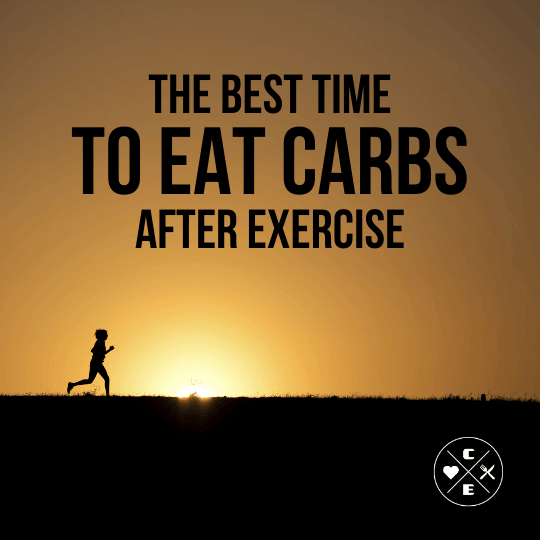
Ultimate Guide to Time-Saving Meal Prep
Jason Nista
Nutrition
|
Healthy Lifestyle
9 minute read
Table of Contents
Meal prep can save you time, money, and stress. Here's how:
- Save Time: Batch cooking can cut your weekly cooking time by 62%, saving 6-8 hours per week.
- Save Money: Homemade meals cost $3-5 per serving versus $12-20 for takeout. Bulk buying reduces food waste by up to 40%.
- Eat Healthier: Meal preppers eat 23% more vegetables and 18% less processed food.
Quick Start Tips:
- Dedicate 1 hour on Sunday to prep staples like proteins and vegetables.
- Use tools like slow cookers and food processors to reduce active cooking time.
- Store meals in compartmentalized glass containers to keep food fresh longer.
Meal prep helps you stay organized, eat better, and reclaim hours from your busy schedule. Ready to start? Let’s dive in!
How to Meal Prep for the Week | Easy & Healthy Meal Prep Guide
Core Meal Prep Methods
Getting the hang of meal prep can save you a ton of time in the kitchen. In fact, research shows it can cut your weekly cooking time by 62% when using batch methods instead of cooking daily [1].
Bulk Cooking Basics
Prepare proteins, grains, and vegetables all at once using different appliances. Here's a quick guide:
| Food Type | Cooking Method | Servings | Storage |
|---|---|---|---|
| Proteins | Batch-roasting | 4-6 servings | 3-4 days in the fridge / 3 months frozen |
| Grains | Stovetop/Rice cooker | 6-8 servings | 3-5 days in the fridge |
| Mixed Vegetables | Oven-roasting | 8-10 servings | 5 days in the fridge |
Scheduling Prep Sessions
Try the 3-Phase Sunday method:
- In the morning, slow-cook proteins.
- In the afternoon, batch-cook grains and vegetables.
- In the evening, portion everything into meals.
"Studies show a 15-minute nightly 'top-up' session combined with weekly bulk prep maintains system efficiency and reduces total cooking time by 3.1 hours per week" [2].
Food Storage Tips
Good storage habits can make your prepped ingredients last longer and save even more time. Research suggests glass containers keep food fresh 37% longer than plastic ones [3]. Here are some tips:
- Store cooked meats with a thin layer of broth in airtight containers.
- Use parchment-lined containers for roasted vegetables to keep them crisp.
- Place leafy greens in containers with ventilation to avoid wilting.
The USDA recommends the "first in, first out" rule - eat older prepped meals before newer ones. Proteins stored in vacuum-sealed bags last twice as long as those in regular ziplock bags [5]. Also, cool hot food on baking sheets before storing to prevent spoilage [4].
Now that storage is covered, let’s dive into the tools that make meal prep even easier.
Must-Have Meal Prep Tools
Getting the right tools for meal prep can make your process faster and easier. Here's what you'll need to get started:
Basic Kitchen Equipment
The right basics make all the difference. A reliable 8-10" chef's knife is your go-to for about 80% of chopping tasks, perfect for handling the protein and vegetable batch prep outlined in our bulk cooking chart [1]. Use separate cutting boards for proteins and vegetables to avoid cross-contamination and keep things safe.
For batch cooking, sturdy sheet pans are a must. While standard options cost around $12, investing in something like Vollrath sheet pans ($28) can last over a decade [7]. These essentials are key to the bulk cooking techniques we’ve covered.
Manual vs Electric Tools Guide
Choosing between manual and electric tools can save you time, depending on your needs. Here's a quick comparison:
| Tool Type | Time Investment | Best For |
|---|---|---|
| Manual Grater | 15 mins/2lbs | Small portions |
| Electric Food Processor | 2 mins/2lbs | Bulk prep |
| Manual Salad Spinner | 5 mins/batch | Daily use |
Electric food processors can reduce vegetable prep time by up to 70%, though they take a bit longer to clean [3]. If you’re looking for an affordable option, the Hamilton Beach 3-cup food processor offers great functionality without breaking the bank [5].
Best Food Storage Containers
Good storage containers keep your food fresh and your kitchen organized. The Glasslock 18-piece set is a standout option - it’s microwave-safe and can go straight to the table. Pair these with the USDA's 'first in, first out' rule to keep your ingredients fresh.
For added efficiency, consider these storage tips:
- Compartmentalized containers to keep different foods separate.
- Labeled bins on organizing carts to cut ingredient search time by 30% [2].
With these tools in hand, you’ll be ready to tackle meal prep like a pro. Next, we’ll dive into simplifying your meal planning process.
sbb-itb-1989a25
Meal Planning Made Simple
Make your prep work easier and more efficient with smart planning techniques.
Weekly Meal Planning Steps
Take your meal prep to the next level with these straightforward strategies:
Check Your Schedule: Identify days when you’ll need quick, grab-and-go meals versus nights when you can cook at home [2][4].
Add Themes: Assign themed nights like "Meatless Monday" to simplify decision-making. Use your prepped ingredients and glass containers to create meals with overlapping components. For example, grilled chicken can double as a salad topping or wrap filling [1][6].
Plan Batch Cooking: Dedicate a specific time for batch cooking, like Sunday mornings. Split your session into focused tasks - chopping at 9 AM and roasting at 11 AM [4].
Nutrition Basics
Creating balanced meals doesn’t have to be tricky. Use these macronutrient guidelines for a 500-calorie meal [4][6]:
| Component | Percentage | Example Portions |
|---|---|---|
| Lean Protein | 30% | 4 oz chicken or tofu (38g) |
| Complex Carbs | 40% | 1/2 cup brown rice (50g) |
| Healthy Fats | 30% | 1 tbsp olive oil (17g) |
Combine these ratios with your prepped seasonal ingredients for quick, nutritious meals.
Using Seasonal Foods
Focusing on seasonal produce can cut grocery costs by 20-30% while ensuring peak freshness and flavor [2]. Here’s how to make the most of seasonal ingredients:
| Season | Top Picks | Prep Tips |
|---|---|---|
| Summer | Zucchini, Berries | Spiralize, Freeze |
| Fall | Squash, Apples | Roast in Bulk, Puree |
| Winter | Citrus, Root Veg | Segment, Batch Cook |
Meal Delivery Options
Balancing meal prep at home with delivery services can save time while keeping meals nutritious.
Mixing Prep and Delivery
Combining home cooking with delivery services can cut down on kitchen time. A mixed approach can save 15-20 hours each month compared to preparing every meal yourself [4]. Here's how to make it work:
Focus your home prep on simple, versatile ingredients, and leave the more complex dishes to delivery. For example, prep staples like:
- Grains and legumes
- Basic proteins
- Pre-cut vegetables
- Overnight oats or other breakfast items
Save delivery meals for busy nights, intricate recipes, or when you want something special.
Clean Eatz Kitchen Services
If you're looking for ready-made options, services like Clean Eatz Kitchen offer a balance of convenience and nutrition. Meals start at $7.99 and cater to various dietary preferences [2]. Their frozen meals pair well with home-prepped sides, and they’re easy to store in your own containers.
| Meal Plan Type | Features | Best For |
|---|---|---|
| Build Your Own | Customizable portions | Flexible diets |
| Weight Loss | Under 600 calories | Calorie control |
| High Protein | Higher protein content | Active lifestyles |
| Bulk Boxes | 30 meals at wholesale prices | Long-term planning |
Cost Comparison: Prep vs Delivery
Finding the right balance between home prep and delivery also depends on your budget. Here's a quick look at the costs:
| Approach | Weekly Time | Weekly Cost* | Cost Per Serving |
|---|---|---|---|
| Full Prep | 4-6 hours | $75-$125 | $4-$5 |
| Hybrid | 2-3 hours | $110-$160 | $6-$8 |
| Full Delivery | 0 hours | $150-$250 | $10-$12 |
*Based on a household of four [1][2]
A hybrid approach often strikes the best balance between saving time and managing costs.
"Use delivery for labor-intensive proteins and pair them with home-prepped bases like rice or quinoa." [4]
Conclusion: Start Meal Prepping Today
Meal prepping can save you 6-8 hours each week through bulk cooking and smart scheduling [1][2][6]. Now that we've covered tools, methods, and planning strategies, it's time to put them into action.
Kick off your meal prep journey with a simple "power hour" on Sunday. Spend one hour washing and chopping vegetables and cooking about 2 pounds of protein, like chicken breast [1][4]. Even this small effort can cut your daily cooking time by 35% [2][5].
Quick Start Tips:
- Dedicate an hour on Sunday to prep: chop vegetables and cook 2 pounds of protein.
- Invest in 3-compartment glass containers (around $25) to keep meals organized.
Time-Saving Ideas:
Use hands-off cooking tools like slow cookers to reduce active cooking time by 45 minutes per meal [2][8]. If your week gets too hectic, you can always supplement with pre-made meals from services we mentioned earlier.
Meal prepping isn’t just about saving time. It can also save you money - about $112 per month compared to eating out - and helps with portion control. Plus, studies show an average weight loss of 6.2 pounds over 12 weeks for consistent meal preppers [4][6].
Keep It Going:
Refresh your ingredients midweek to avoid getting bored while still enjoying the perks of bulk prep.
The key is consistency, not perfection. Start with these basic steps, and you'll be on your way to making meal prep a practical and time-saving habit that works for you.
FAQs
What is the best equipment in meal preparation?
Here’s a breakdown of tools that can make meal prep faster and easier:
| Equipment | Benefit | Example Brand |
|---|---|---|
| Food Processor | Speeds up vegetable prep by 70% | Robot Coupe |
| Chef's Knife | Boosts chopping efficiency by 35% | Wüsthof Classic |
| Cut-Resistant Gloves | Helps avoid injuries during prep | Various Options |
Pair these tools with bulk cooking strategies from Section 2 for maximum efficiency:
- Chef’s Knife: A high-quality knife with a comfortable grip is your go-to for 80% of prep tasks. It’s versatile and reliable.
- Food Processors & Multi-Cookers: These gadgets handle repetitive tasks like chopping and cooking in bulk, cutting active prep time by 30-50%.
- Smart Storage: Glass containers with compartments keep ingredients separated and organized, reducing waste and spoilage.
"Users report a 40% reduction in active kitchen time with the right appliances integrated into their routine" [2][3].
As highlighted in our bulk cooking chart, these tools are essential for prepping proteins and vegetables efficiently, while also minimizing risks like injuries or food spoilage [4][5].
Related Articles
Ultimate Guide to Portion Control Containers
8 minute read
10 Best Smart Food Scales for Portion Control
8 minute read
Best Time to Eat Carbs After Exercise
7 minute read



